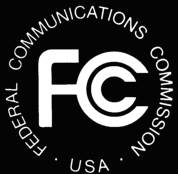The Experiment Station still exists today and has actually proliferated. Today Kansas State University owns and operates 18,000 acres of Agricultural Experiment Stations in research centers in Hays, Garden City, Colby, and Parsons Kansas. In a practical sense, this is the academic lab for agribusiness. If you want wheat resistant to wheat rust and glows in the dark... this is where that would happen. Why do I bring this up? Well they did a little something with early radio.More here."The Engineering Experiment Station was established for the purpose of carrying on tests and research work of engineering and manufacturing value to the state of Kansas, and of collecting, preparing and presenting technical information in a form readily available for the use of the various industries within the state. It is the intention to have all the work of this experiment station of direct importance to Kansas."
 Professor Andrey Abraham Potter was their assistant professor in mechanical engineering from 1910 to 1913 professor of mechanical engineering in the Kansas State Agricultural College. After that he was the acting dean of their Engineering division and acting director of the engineering experiment station.Because this bulletin was kept so early in the history of radio he very avidly had them include articles on the "radiophone." It includes some very informative QSL reports. It lists off the regular broadcasting programs in their district for potential listeners particularly on WDAF-AM, WEAF-AM, WBAP-AM, KLZ-AM, KSD-AM and WHB-AM. Among others. In a 1923 bulletin they published the following:
Professor Andrey Abraham Potter was their assistant professor in mechanical engineering from 1910 to 1913 professor of mechanical engineering in the Kansas State Agricultural College. After that he was the acting dean of their Engineering division and acting director of the engineering experiment station.Because this bulletin was kept so early in the history of radio he very avidly had them include articles on the "radiophone." It includes some very informative QSL reports. It lists off the regular broadcasting programs in their district for potential listeners particularly on WDAF-AM, WEAF-AM, WBAP-AM, KLZ-AM, KSD-AM and WHB-AM. Among others. In a 1923 bulletin they published the following:The published information on making cheap receiving sets, and making and charging batteries to power them. They sent out their own weather reports by telegraph from a station WTG. Sadly the bulletins have little information on this service. Barry Mishkind wrote about a 1923 Department of Commerce list that had WTG broadcasting on 485 meters. There is some confusion about the station because documents self-describe it as "telegraphic." It was not a telegraph office. It just broadcast in Morse Code. Their first experimental callsign was 9YV, based in Manhattan, KS. It was first licensed in 1912 and became WTG in 1922. In 1924 the calls changed to KSAC-AM with a new frequency of 880 kHz. In 1925 they moved to 580 to share time with WIBW-AM. In 1984 the calls changed to KEXT-AM, then finally KKSU later that year."To those living in Kansas the service rendered by the broadcasting station of the Kansas City Star, which has been designated by its government license as W. D. A. F., is available afternoons and evenings. The Sweeney Automobile School of Kansas City also renders valuable service from its high powered station W. H. B. The stations at Topeka, Wichita, Emporia, Hutchinson, Salina, Denver, Colo., Lincoln, Neb., Jefferson City, Mo., and the Kansas State Agricultural College supply all parts of the state with information and entertainment adapted to the communities served; while the large stations at Davenport, Iowa; Omaha, Neb.; Chicago, 111.; Pittsburgh, Pa.; Atlanta, Ga.; Detroit, Mich.; Minneapolis, Minn.; St. Louis, Mo.; Schenectady, N. Y., and a number of Texas stations may be heard through most receiving sets in Kansas."
They are generally thought to have broadcast the first regular weather information in the United States. Their daily weather broadcast in Morse code went out at 9:00 AM. In 1921, physics instructor Eric R. Lyon was running the station. Route56.com has great information on these early years. Today that station comes down to us as 580 KKSU-AM which after 78 years of broadcasting went off air in 2002 allowing WIBW to go full-time. The KKSU staff reorganized and now produce agricultural news programming for other Kansas stations, with now more than 50 affiliates. More here.







 , a
, a











































